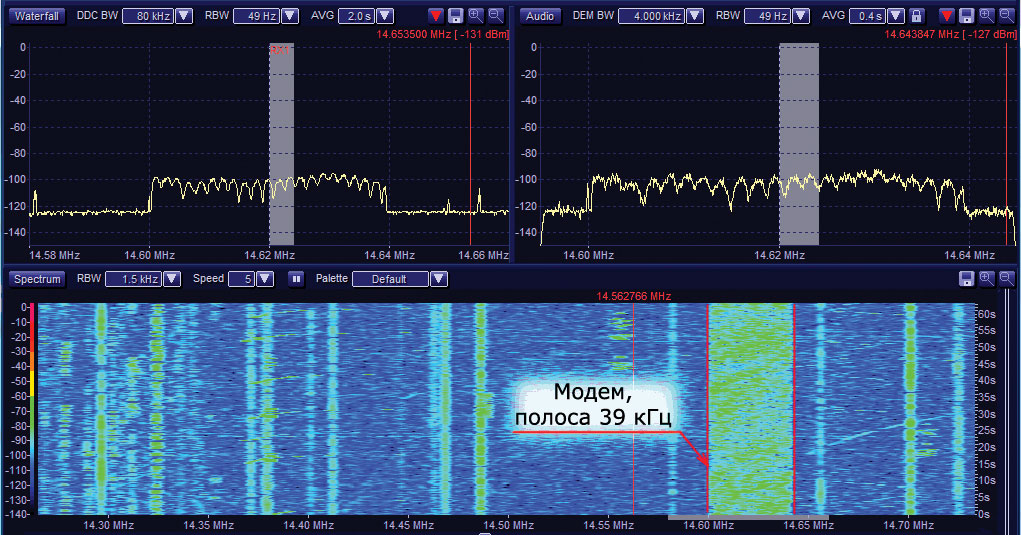 |
SDR HF Wireless modem MDM-40K0
SDR HF wireless modem provides data transmission at the band 3, 6, 12, 24 or 39 kHz. Operating at the band 39 kHz is performed using the hardware program not worse than Intel Core-i7.
For operating in the multibeam fading channel there is a variety of data transmission speeds from 300 to 124800 b/s. During operating it is possible to achieve the data transmission speed to 145600 b/s.
Part number:
Supplier:
The Ruselectronics holding companyDescription
For adapting to different channel types there are 3 speeds of noise-immune coding and signal constellations from PSK-2 to QAM-256 in the modem. Data block length can vary in the range from 0,6 to 60 seconds. In order to increase transmitted data integrity, quasicoherent receiving and multiple (antennas, frequency and time) spaced receiving with soft summation are used. Data input/output and control are realized at the interface Ethernet using the protocol stack TCP/IP. Signal input/output is possible at the interface S1-TF using external adapters. The modem successfully passed the tests at the radio paths with the length 50, 300, 2200, 2800 km. While testing, error-free data receiving was provided at frequency dispersion to 10 Hz, time spread to 6 ms and separated beams number not more than 10. While operating at the standard telephone channel band (300…3400 Hz) in conditions of a real HF channel, data transmission speed 9600 b/s is provided with ionospheric wave at the average signal/noise correlation of the order 20…25 dB. While extending the emission frequency band, the proportional data transmission speed increase is provided and the requirements to the signal/noise correlation remain the same. In order to increase the radio line energy potential, special measures for peak-factor decreasing, providing correlation between the nominal power of a transmitter and an average radiated power of the order 0,2 (for the speed 124800 b/s at the band 39 kHz) are realized.
The comparison of the noise immunity of the modem with the requirements of the standards STANAG 4539 for a “bad” channel (according to ITU-R F.520) at the band 300…3400 Hz
Signal spectrum and spectrogram at the verifying transmitter (G31DDC), rout Omsk-Moscow, November, 2012, signal band 39 kHz, operating frequency of the order 0,5 from HPF.
The comparison of the noise immunity of the modem with the requirements of the standards STANAG 4539 for a “bad” channel (according to ITU-R F.520) at the band 300…3400 Hz
Signal spectrum and spectrogram at the verifying transmitter (G31DDC), rout Omsk-Moscow, November, 2012, signal band 39 kHz, operating frequency of the order 0,5 from HPF.